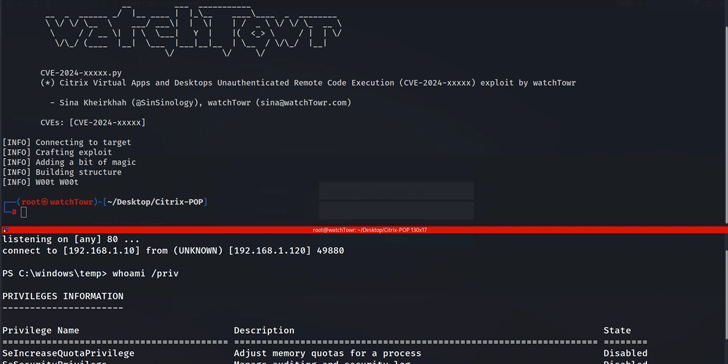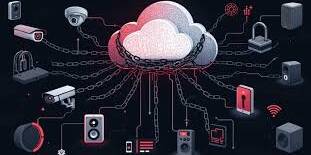Iranian Hackers Deploy WezRat Malware in Attacks Targeting Israeli Organizations
This development highlights the sophistication and ongoing nature of cyber espionage campaigns linked to state-sponsored threat actors. WezRat’s multifunctional capabilities, such as command execution, keylogging, screenshot capture, and the ability to steal sensitive information like clipboard data and browser cookies, point to its utility in broad surveillance and data exfiltration.
The fact that WezRat can deploy additional modules from its C&C server, packaged as DLL files, underscores a strategic attempt to keep the main malware component inconspicuous, avoiding detection. This modular design facilitates adaptability, allowing attackers to modify or enhance WezRat’s functionality as needed without raising immediate suspicion.
Attribution to Cotton Sandstorm (also known as Emennet Pasargad and ASA) aligns with Iran’s established pattern of leveraging cyber tools for geopolitical aims, focusing on espionage and potentially destabilizing operations. This underscores the need for robust cybersecurity measures, particularly for organizations that might be targeted for strategic, economic, or political reasons.
The new details about WezRat’s deployment method emphasize the strategic approach taken by Cotton Sandstorm to ensure successful infiltration and evasion. Distributing the trojanized Google Chrome installers is a particularly effective tactic, leveraging the trust that users have in widely-used, legitimate software to bypass initial suspicion.
- Trojanized Software: The attack involves a tampered Google Chrome installer that performs a dual action: installing Chrome while concurrently launching a malicious executable (Updater.exe, internally identified as bd.exe).
- Phishing Tactics: The distribution of WezRat via phishing emails impersonating the Israeli National Cyber Directorate shows a targeted, socially-engineered approach designed to maximize the credibility of the email and urgency of the call to action. Using a plausible sender address (alert@il-cert[.]net) enhances this deception.
- Command and Control (C&C) Communication: The malware communicates with a C&C server at connect.il-cert[.]net, listening on port 8765. This connection facilitates further instructions to be sent to the compromised system, making it adaptable and capable of dynamic operations based on the attacker’s objectives.
- Execution Mechanism: The backdoor requires specific parameters, including a password, for proper operation. This mechanism acts as a safeguard against unintended execution or tampering, ensuring that only attackers with the correct information can fully control the malware.
Mitigation Measures:
- Verify Software Sources: Always download installers and updates directly from the official vendor’s website.
- Endpoint Protection: Implement advanced endpoint security solutions capable of detecting anomalous behavior, even from trusted software.
- Email Security: Enhance email filtering to catch phishing attempts, and educate users to verify email authenticity, particularly when it involves security updates.
- Network Monitoring: Monitor for unusual outbound traffic patterns, especially those involving communication with known C&C server domains.
Technical Details:
- Attack Vector:
- Vector Type: Remote (phishing emails as an initial access vector).
- Privileges Required: Typically, no special privileges are needed for initial compromise through the execution of a malicious file sent via email.
- User Interaction: Required, as victims need to download and execute the trojanized installer.
- Exfiltration and C&C Techniques:
- C&C Server: connect.il-cert[.]net, port 8765.
- Data Harvested: System information, user keystrokes, screenshots, clipboard data, and cookies.
- Indicators of Compromise (IOCs):
- Malicious Files: Google Chrome Installer.msi (trojanized), Updater.exe (malicious executable).
- Communication Endpoints: Domains and IPs associated with the C&C infrastructure (connect.il-cert[.]net).
- Defense Evasion:
- Modular Payloads: The backdoor downloads additional DLLs from the C&C server to expand functionality and evade detection by minimizing the core payload’s footprint.
- Password Protection: The requirement for a password to execute certain functions helps prevent unintended activations and detection during automated analysis.
- Persistence Mechanism:
WezRat’s documentation does not detail how it establishes persistence on infected systems, but typically, such malware might use registry modifications or scheduled tasks to survive reboots.
- Mitigation Strategies:
- Patch Management: Ensure systems are updated to mitigate vulnerabilities that might be exploited as part of the infection chain.
- User Training: Educate users on phishing techniques and verify unexpected communications.
- Endpoint Detection and Response (EDR): Deploy EDR tools capable of identifying and responding to suspicious behavior indicative of RAT activities.
Impact
The impact of WezRat, as employed by Iranian state-sponsored actors, can be significant for targeted organizations, particularly those involved in strategic, economic, or political sectors.
- Operational Disruption:
- Reconnaissance: WezRat’s ability to gather system information and conduct reconnaissance enables attackers to map the network and plan further actions, potentially leading to severe disruptions.
- Command Execution: The malware can execute arbitrary commands, posing a risk of sabotaging operations, deleting critical files, or disrupting services.
- Data Exfiltration and Espionage:
- Sensitive Information Theft: WezRat can capture keystrokes, screenshots, clipboard data, and browser cookies, leading to the theft of confidential data such as login credentials, intellectual property, or strategic plans.
- Long-Term Espionage: Its capability to install additional modules allows sustained surveillance, enabling attackers to monitor activities over an extended period.
- Financial Impact:
- Direct Financial Loss: Compromised systems could lead to theft of financial information, unauthorized transactions, or extortion.
- Response Costs: Investigating and remediating a breach involving WezRat can be expensive, involving incident response teams, forensic analysis, and strengthened cybersecurity measures.
- Downtime: Operational disruptions can result in productivity loss, especially if critical services are affected.
- Reputational Damage:
- Public Trust: Organizations targeted by state-sponsored cyberattacks may suffer reputational harm, leading to a loss of trust among clients, partners, and the public.
- Regulatory Impact: Breaches involving stolen data could lead to violations of data protection laws, resulting in fines and legal consequences.
- National Security and Geopolitical Tensions:
- Strategic Intelligence: When targeted against governmental or defense entities, WezRat’s reconnaissance capabilities can provide adversaries with valuable intelligence, impacting national security.
- Geopolitical Implications: Attribution to a state-sponsored group, like Cotton Sandstorm, could heighten geopolitical tensions, especially if critical infrastructure or sensitive sectors are targeted.
- Technical and Network Impact:
- Infrastructure Compromise: WezRat’s modular design and C&C communication allow it to deploy new tools or malware, potentially opening backdoors and leaving the network vulnerable to secondary attacks.
- Malware Propagation: If connected endpoints are compromised, attackers might use them to pivot within the network, extending the breach’s impact.
Indicators of Compromise (IOCs)
- Malicious File Artifacts:
- Trojanized Installer: Google Chrome Installer.msi
- Malicious Executable: Updater.exe (internally named bd.exe)
- Domains and IPs:
- C&C Server Domain: connect.il-cert[.]net
- C&C Port: 8765
- Email Indicators:
- Phishing Email Address: alert@il-cert[.]net
- Phishing Campaign Date: Emails observed around October 21, 2024
- Impersonated Entity: Israeli National Cyber Directorate (INCD)
- File Hashes (examples for identifying malicious files):
- MD5/SHA256: Specific hashes should be extracted from threat intelligence databases and updated as discovered in various samples.
- Observed File Paths and Names:
- File Name: Updater.exe
- Potential Installation Paths: Depends on where the user runs the installer (e.g., %TEMP%, %APPDATA%).
- Registry Changes:
- While specific registry keys were not detailed in the reports, RATs often create persistence mechanisms that may involve registry modifications for autorun purposes.
- Network Traffic Patterns:
- Outbound Connection: Traffic attempting to communicate with connect.il-cert[.]net on port 8765.
- Encrypted Communication: Data sent to and received from the C&C server may be obfuscated or encrypted to evade detection.
- Behavioral Indicators:
- Keylogging Activity: Monitoring of keystrokes.
- Screenshot Capturing: Unusual processes capturing desktop images.
- Clipboard Content Theft: Unexpected data retrievals from clipboard history.
- Cookie File Collection: Access to browser directories where cookies are stored.
Recommendations:
To defend against threats like WezRat and similar advanced malware, organizations should adopt a comprehensive security strategy.
- Email Security Enhancements:
- Phishing Awareness Training: Regularly train employees to identify and report phishing attempts, especially those impersonating official entities like the Israeli National Cyber Directorate.
- Email Filtering: Implement advanced email security solutions to detect and block emails containing suspicious attachments or links, especially those from senders like alert@il-cert[.]net.
- Endpoint Protection:
- Endpoint Detection and Response (EDR): Deploy EDR solutions capable of identifying and blocking malicious processes, such as Updater.exe, and monitoring suspicious behavior (e.g., keylogging or screenshot capture).
- Antivirus and Anti-Malware Tools: Ensure these tools are up to date and configured to scan for indicators like the known IOCs of WezRat.
- Application Control: Use application whitelisting to prevent unauthorized executables from running.
- Network Security Measures:
- Monitor Outbound Traffic: Set up alerts for connections to known malicious C&C domains, like connect.il-cert[.]net, and specific ports (e.g., 8765).
- Intrusion Detection and Prevention Systems (IDPS): Implement and configure IDPS to identify and block traffic matching WezRat’s signature or behavioral patterns.
- Secure DNS: Use DNS filtering to block access to malicious domains proactively.
- Patch and Update Management:
- Regular Software Updates: Ensure that all operating systems, browsers, and third-party applications are updated to the latest versions to minimize vulnerabilities.
- Review Installer Sources: Verify that software installers, especially those for commonly targeted applications like Chrome, are obtained from trusted sources.
- User Privilege Management:
- Limit Privileges: Ensure users only have the minimum necessary permissions to perform their job functions, limiting the impact of successful exploitation.
- User Account Control (UAC): Keep UAC enabled to prompt for approval before allowing high-risk actions or program installations.
- Incident Response Plan:
- Develop and Test Incident Response: Prepare and practice a response plan for rapid identification and isolation of compromised systems.
- Forensic Analysis: Have procedures in place for investigating and analyzing attacks to identify affected systems and remediate them effectively.
- File Integrity Monitoring (FIM):
- Monitor Critical Files: Deploy FIM to detect changes to important files or directories where WezRat may be installed or executed (e.g., %APPDATA%, %TEMP%).
- Regular Security Audits:
- Vulnerability Assessments: Conduct regular scans and vulnerability assessments to identify potential weaknesses in the network.
- Red Team Exercises: Simulate attacks using penetration tests to validate the effectiveness of security controls.
- Multi-Factor Authentication (MFA):
- Enable MFA: Implement MFA on all remote access points and sensitive accounts to add an additional layer of defense, even if credentials are compromised.
- Threat Intelligence Integration:
- Stay Updated: Subscribe to threat intelligence services for real-time updates on emerging threats like WezRat and related IOCs.
- Share Insights: Participate in threat-sharing communities to exchange information and strategies for mitigation.
- Backup and Recovery Plan:
- Regular Backups: Maintain encrypted backups of critical data and ensure they are isolated from the primary network.
- Verify Recovery Processes: Periodically test backup restoration to ensure data integrity and reliability during an incident.



